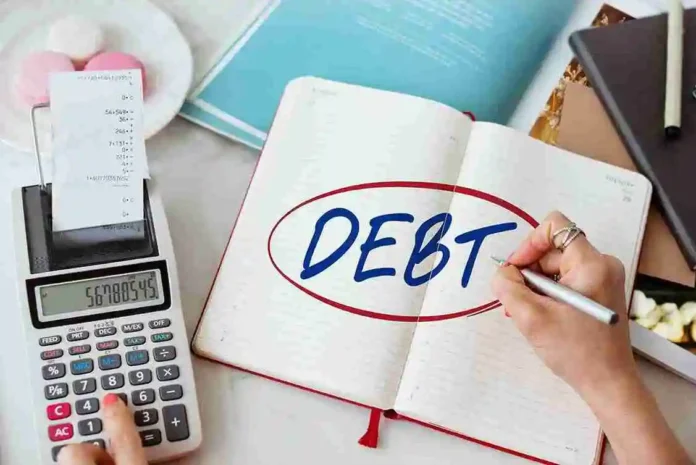Millions of people owe money today, and while sometimes there is no other choice than to borrow money, it can easily spiral out of control. Be it credit card debts, student loans, personal loans, medical bills, and so on – the burden of debt is bound to deter your progress as well as your peace of mind. The silver lining is that it is possible to eliminate debt and be able to see farther than your present with the right debt management techniques.
In this guide, we will look at the best and most effective debt management techniques that can enable you to formulate an easy step-by-step approach to clearing your debts and achieving a more secure economic position.
-
Assess Your Debt Situation
Before you can tackle your debt, it’s important to get a complete picture of what you owe. Start by gathering information about all your debts, including:
- Credit card balances
- Student loans
- Personal loans
- Car loans
- Medical bills
- Mortgage (if applicable)
Make a list that includes:
- The total amount owed for each debt
- The interest rates on each debt
- The minimum monthly payments
This will give you a clear understanding of your overall financial obligations and help you decide on the best approach to paying off your debt.
-
Create a Budget to Maximize Debt Repayment
The second step in overcoming debt is by adjusting the budget towards completely repaying the debt. A budget helps you control your funds, income, and spending, and assists in directing some of your funds towards early debt repayment.
Start by tracking your monthly income and necessary expenses, such as:
- Housing (rent or mortgage)
- Utilities (electricity, water, internet, etc.)
- Transportation
- Groceries
- Insurance premiums
Is there a monthly allowance for you to use to pay back the debt after all the necessities are paid. The stronger the amount you can pay towards debt repayment, the lesser the time you will have to be in debt.
Cut Back on Non-Essential Spending
To free up more money for debt repayment, consider cutting back on non-essential expenses such as:
- Dining out
- Entertainment (movies, concerts, etc.)
- Subscriptions (streaming services, gym memberships)
By making temporary sacrifices, you can accelerate your debt repayment and save on interest over time.
-
Prioritize Your Debts: Snowball vs. Avalanche Method
Debt management involves two popular strategies that most people apply in order to prioritize: it is either the debt snowball method or the debt avalanche method. Ultimately, both approaches possess merits, so it is essential to select the approach that best fits both the behaviors and circumstances surrounding the bill within the making.
Debt Snowball Method
Utilizing the snowball strategy focuses on paying off small-sized debts while only making minimum payments on larger ones. When the small-sized debt has reduced/ been paid, the amount which is paid will be transferred to the next smallest-sized debt, so the process continues creating momentum as Dallas chomps through each of them.
- Pros: The psychological boost of seeing debts eliminated quickly can be motivating and help you stay committed to your debt repayment plan.
- Cons: The snowball method may not save as much money on interest since it doesn’t prioritize high-interest debts.
Debt Avalanche Method
The debt avalanche method’s focus however, happens to be, on the highest interest type of debts paying its due installments in-turn on the other remaining types. After that high-interest represents the ideal center of attention, lower and lower debts render greater attention to each other’s assets.
- Pros: Not only does this technique encourage people amenorrheally and for a long-term perspective, however they also pay off their debts in a more simple manner.
- Cons: It may take a longer period of time to receive results especially if your most prioritized debt is of high balance which may act as a demotivating factor.
Having to choose which debt payment method to adopt between the snowball and avalanche, hinges on the borrower’s preference of wanting immediate small accomplishments or large long-term savings.

-
Consolidate Your Debts
You possess a number of options to handle various debts, and debt consolidation is among the more efficient ones, particularly in overcoming balances on multiple credit cards or loans. While debt consolidation seeks to combine numerous current debts into one loan with a lower interest rate, it also reduces the number of payments you will have to make to just one a month.
Types of Debt Consolidation Options:
- Balance Transfer Credit Cards: Consider sending your balance to a credit card that offers promotional rates of 0% in an effort to pay off high-interest debt faster.
- Personal Loans: It is possible to obtain a personal loan, use it to eliminate many debts, and have a single fixed monthly repayment at a lower interest rate. This should make things easier for you in your management of debt, and reduce the amount of time it takes for you to pay interest.
- Home Equity Loans or Lines of Credit (HELOCs): Such persons can borrow against the equity in their homes to acquire a loan of lower interest in order to settle outstanding debts. However, such options can be risky, since they put one’s dwelling house in jeopardy in the event that the borrower fails to service the loan.
Debt consolidation can make your financial life easier and assist you in repaying your obligations faster. However, it is worth examining the conditions properly so that more debt is not taken or the length of the repayment is not lengthened for no good reason.
-
Negotiate with Creditors or Seek Professional Help
Debt collection agencies tend to be ruthless, and if you feel like owing money is making you sink rather than swim, it would be wise to deal with the issue before it gets out of hand. Owing money is not an ideal situation, but the reality is many lenders consider your personal and financial struggles in the negotiation process. Below is what you can do:
- Negotiate a lower interest rate: Simply call your credit card issuer or bank and see if they are open to Negotiating your interest rate. This is because even a slight cut in rates can help you save a lot in the long run.
- Request a payment plan: In some cases, a creditor may provide an outstanding balance and establish a custom payment plan that enables the customer to gradually settle the balance.
If these options seem uncomfortable, there are always alternatives to bargaining with your creditors such as certified credit counselors. Counselors affiliated with credit counseling organizations can create a debt management plan for you, help you settle your debts for less than owed, and assist with your payments. Remember, not all credit counselors are created equal, so it is always wise to look for a credible, non-profit organization.
-
Avoid Accumulating More Debt
While you’re focused on paying off your current debts, it’s crucial to avoid accumulating new debt. Here are some tips to help you break the debt cycle:
- Stop using credit cards: Consider cutting up your credit cards or freezing them in a block of ice to prevent impulse spending. Stick to cash or debit cards to avoid racking up more debt.
- Create an emergency fund: Having an emergency fund can prevent you from relying on credit cards for unexpected expenses. Aim to save at least $1,000 as a starting point, then gradually build up to three to six months’ worth of living expenses.
- Live within your means: Make sure your spending aligns with your income. If you’re living beyond your means, it’s easy to fall back into debt even after paying off existing balances.
-
Stay Committed and Track Your Progress
Debt repayment has to be viewed in the context of running a marathon as opposed to a fifty meter dash. It is important to remember that at times when movement feels stagnant towards the goal, one must remain steadfast and committed to the long enterprise. Measuring how far you have come in repaying your debt can be a good source of motivation because you accomplish something in the midst of struggles.
- Use debt repayment calculators: You can use these web-based tools to get an estimate of the number of months it will take you to settle the debt owing to the amount you are currently paying and the accrued rates.
- Celebrate milestones: Let every occasion that you are able to settle a part of the debt or achieve a target saving be a day of celebration. Whether it’s setting a credit card to zero or merely having the balance drop below a threshold, reaching and setting mini-objectives leads to a stronger resolve towards the final goal which is to live a life free of debts.
Final Thoughts
Paying off a debt in an effective manner, it takes a good level of strategy, discipline and commitment over time. Creating a realistic budget, understanding the hierarchy of your debts, and implementing either the snowball or avalanche approach means progressive movement towards the goal of debt elimination. Further, strategies such as debt consolidation, negotiation, and new debt avoidance can help extreme further in achieving the goal of financial freedom. One important thing to note is that let us focus, regularly monitor what we have accomplished and put in the necessary efforts, which reduce the debt overtime, to make sure that we are able to succeed in the endeavours.

